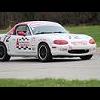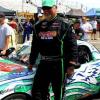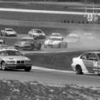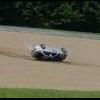E. If a pace car is used, it will be positioned at the head of the pack,
with emergency lights flashing. When the field is released, the pace
car may begin at a brisk pace, but will be sufficiently slowed before
it pulls off the track to allow orderly grouping of the field. Drivers
may not pass the pace car until it pulls off the track and the pole
car will maintain the speed of the pace car before it pulled off track
until the green flag.
If the race is not started, another pace lap will be run. Depending
on conditions, the pace car may overtake the field and resume its
function.
The front row drivers must be advised not to pass the pace car and
that the pace car may return to its position for the additional pace
lap if there is no start.
If a pace car is not used, the pole car will serve that function from
its position in the front row, complying with the instructions of the
Chief Steward or his designee.
K. The SCCA Standard Rolling Start is not a flying start. The pace lap
may begin at a brisk pace, but must be sufficiently slowed before
the start line to allow orderly grouping of the field. The actual speed
immediately prior to the start is dictated by the types of cars, size
of the field, and course layout. The same official should brief the
front row drivers before each race, preferably the Starter, under the
direction of the Chief Steward.
Mike,
Throughout my 16+ years doing this, that has always been the procedure. I had no issue with the start of your race because, no 1, I had set such a slow pace to get the pack tightened up, and no 2, they did not not just go mat out as I had seen in the past. It was a gradual, but rapid increase in speed if you know what I mean. In my mind, no foul.
But as I was told by my director, he believess it may have been voted out of the GCR at the latest meeting, so you would not see it in print yet. Either way, I had no problems with the initial start, however, I was not the "Safety Car" driver for the full course yellow. Therefore I cannot comment on what happened.
Jack




 Sign In
Sign In Create Account
Create Account
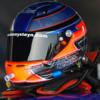



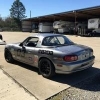


 Back to top
Back to top Report
Report



